50 Ways to Celebrate the 50th Anniversary of Earth Day!
By Nicole Burns In Lifelong LearningApril 22, 2020
We hope you enjoyed our Virtual Earth Day Festival! To relive it again, just search #VLMVirtualEarthDay on you favorite social site. Even though this day only comes once a year, protecting our one planet is something we strive to do everyday at the Virginia Living Museum.
Over the last several days, we have provided 50 ways we can incorporate more conservation & sustainability in our day-to-day lives. Here they are all together in one place. See if you can commit to at least one new thing for the remainder of 2020. As an added challenge, see if you can achieve a “blackout” on our Earth Day Bingo card.
10 Ways You Can Reduce Your Carbon Footprint
- Re-Think Your Transportation – When possible, try using a more eco-friendly method of transportation. Walking and riding a bike don’t use any fossil fuels. Carpooling and public transit are options that use a set amount of fossil fuel to transport a large number of people making them a good choice for reducing your carbon footprint.
- Switch to LED Lights – LED light bulbs use 75% less energy and last 25 times longer than other lighting options. This not only saves you money but also reduces your carbon footprint by lowering the amount of energy you use to light your home.
- Buy Local – Buying products made locally reduces transportation costs and fossil fuel use.

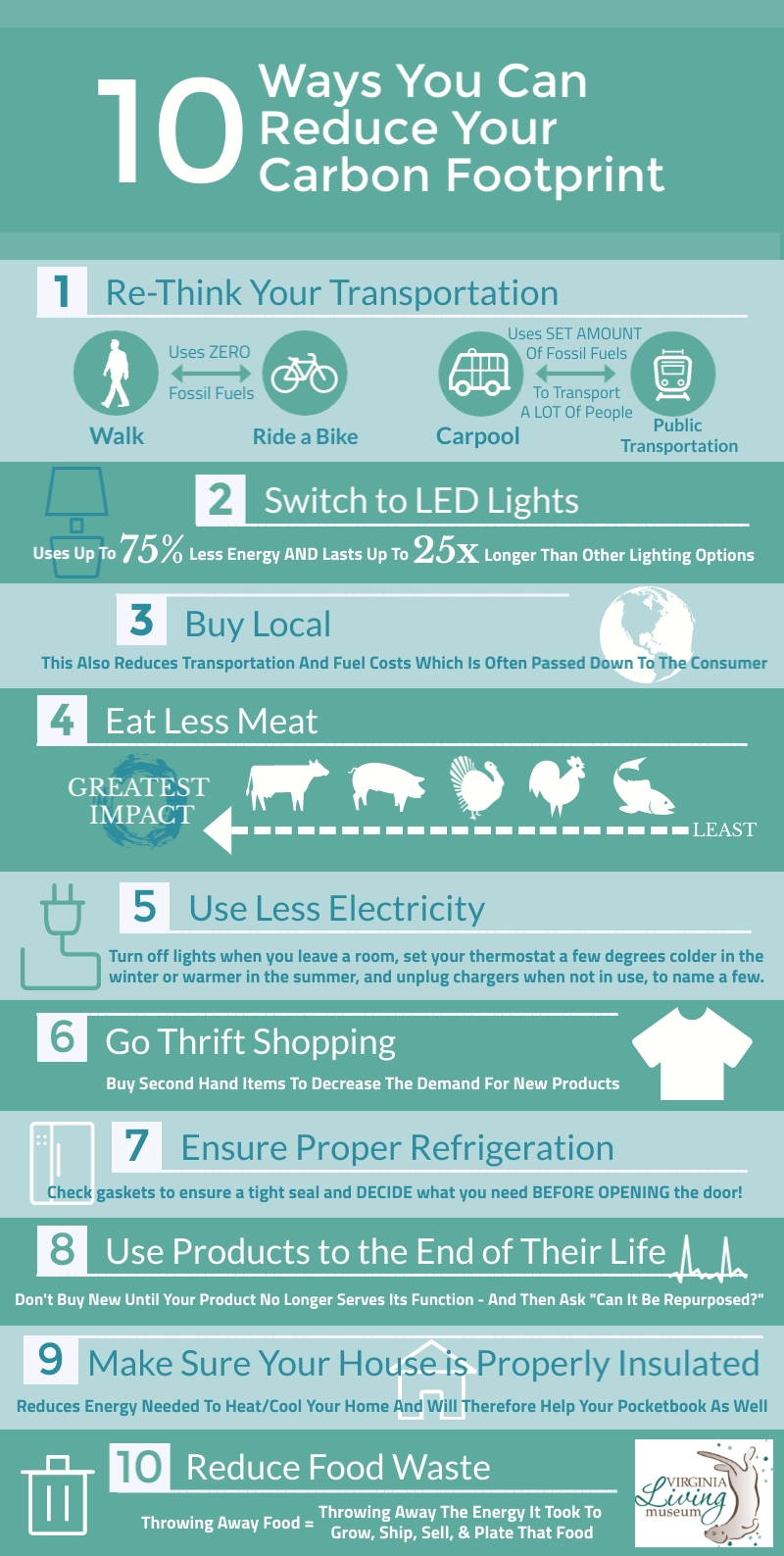
- Eat Less Meat – Meat production requires very high energy usage and the use of large amounts of land. By reducing your meat consumption, you can lower your carbon footprint. The type of meat you choose can also impact your carbon footprint – red meat has a bigger impact than poultry.
- Use Less Electricity – Turning off lights when you leave a room, setting your thermostat a few degrees colder in the winter or warmer in the summer, and unplugging chargers when not in use can lower your energy usage and reduce your carbon output.
- Go Thrift Shopping – Clothes production uses lots of energy, but high quality items can get a new life and you can reduce your carbon footprint when you purchase clothing from a secondhand store.
- Ensure Proper Refrigeration – Improper refrigeration can be a huge waste of energy which means an increase in carbon output. Refrigerators and freezers operate best when opened as infrequently as possible and with tight fitting gaskets to ensure none of the cool air inside is leaking out. If the refrigerator and freezer are not properly sealed, the appliance would have to work harder and continually run to keep the temperature cold enough.
- Use Products to the End of Their Life – Try to use products until they no longer function instead of getting rid of them prematurely. By using items to the end of their life, the energy that went into the production of the product wasn’t squandered. Also look for products with fewer issues and a longer life – some objects aren’t designed to last. Don’t buy any new products until the ones you already have are completely worn out and no longer perform the function they were designed to do. As a bonus, see if you can repurpose old items in a new way to increase their longevity.
- Make Sure Your House is Properly Insulated – Energy can escape from your uninsulated windows and doors causing higher electrical usage and increased carbon production. Make sure your home is properly insulated to lower your energy use and lessen your carbon footprint. Also, monitor your heat and air conditioning settings to more effectively heat and cool your home. Try setting your thermostat 2 degrees cooler in the winter and 2 degrees warmer in the summer.
- Reduce Food Waste – Food waste contributes to your carbon footprint because the energy that went into growing, shipping, and selling the food was wasted instead of providing nutrients to people.
10 Ways You Can Make Your Health and Beauty Routine More Sustainable
- Switch to Bottleless Shampoos & Conditioners – Many retailers and online shops are now offering bar shampoos and conditioners. Swapping your bottles for bar options will not only help reduce plastic waste but reduce how often you need to buy shampoo and conditioner because bars tend to last longer than bottled hair cleaning products.
- Buy Refillable Beauty Items – Using beauty products that offer a refillable option means that you are keeping plastic out of landfills.
- Use a Bamboo Toothbrush – Dentists’ recommend getting a new toothbrush every 3 months, but toothbrushes cannot be recycled. By switching to bamboo toothbrushes, you can eliminate the non-recyclable plastic from heading to the landfill.

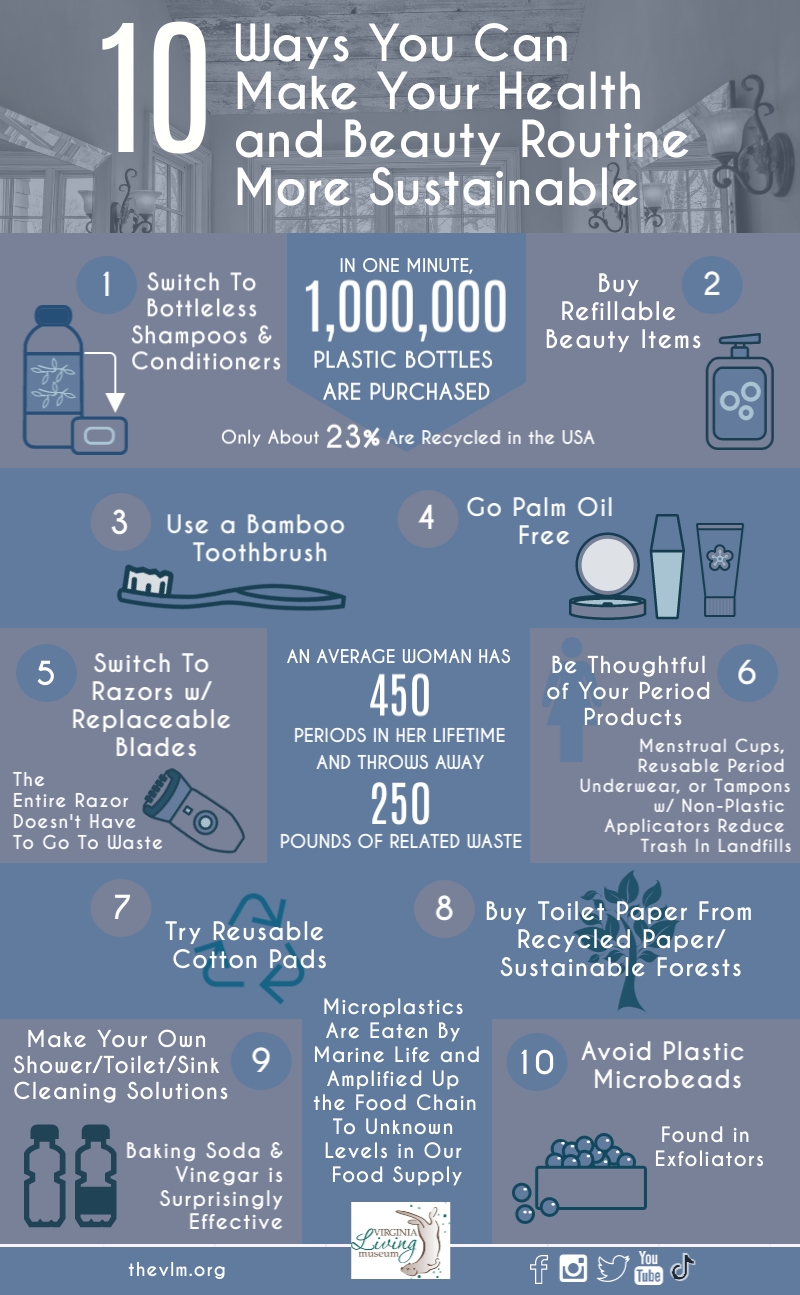
- Go Palm Oil Free – Palm oil is used in many health and beauty products, but palm oil production can have a major impact on ecosystems and wildlife in the growing area. Trying to avoid products produced with palm oil will help preserve critical habitats worldwide.
- Switch to Razors with Replaceable Blades – While disposable razors may be convenient, there are now many options that are equally convenient but have replaceable blades so the entire razor doesn’t have to be disposed of every time.
- Be Thoughtful About Your Period Products – The average woman has 450 periods in their lifetime and throws away roughly 250 pounds of period related waste. By using menstrual cups, tampons with non-plastic applicators, or reusable period underwear you are reducing the amount of trash in landfills.
- Try Reusable Cotton Pads – Many people use cotton pads or cotton balls to wash their face or remove makeup, but they can be replaced with washable cotton rounds which will last years and eliminate waste from your health and beauty routine.
- Buy Toilet Paper from Recycled Paper/Sustainable Forests – Using sustainable toilet paper can help to protect wildlife habitat, preserve old growth forests, and support sustainable paper production.
- Make Your Own Shower/Toilet/Sink Cleaning Solutions – Many things in your bathroom can be cleaned with vinegar, baking soda, grease-cutting dish soap, and other common household items. These items don’t have harsh chemicals which can run down the drain and into your local watershed.
- Avoid Plastic Microbeads –Some exfoliators have plastic microbeads in them. These microbeads end up in the ocean and add to the microplastics to the ecosystem. The microplastics can be eaten by marine life and harm them.
10 Ways to Make Your Kitchen More Sustainable
- Forgo Harsh Cleaning Chemicals – Many household cleaning products can be very harsh on the environment. It might seem okay to use inside your house, but anything that goes down your drain will eventually head into your local watershed. Consider using products without harsh chemicals, or even things you probably already have in your kitchen! Baking soda and vinegar are great multipurpose cleaning products that are safe for your family and the environment.
- Compost – Try installing a small compost bin in your kitchen or backyard to help repurpose some food scraps and create nutrient rich fertilizer for any plants you may have. Be sure you are composting the correct things by avoiding meats, bread, dairy, and any processed items.
- Use Reusable Dish Towels – Americans use about 13 billion pounds of paper towels every year, but that number can be lowered by using washable dish towels and hand towels in your home.


- Prep Your Own Food – Purchasing pre-cut or pre-cooked foods can be bad for the environment by increasing the amount of packaging needed to get the food to market and it can also cause more energy production to go into preparing the food for sale.
- Support Local Farmers – Buying local food not only helps support local farmers, but it greatly decreases the amount of distance your food has to travel to reach you! Food can be transported from all around the world to reach your grocery store – this can mean hundreds or thousands of miles on ships and in trucks which uses a massive amount of energy.
- Buy in Bulk – Buying bulk packages of staple food items or items you use often can reduce the amount of packaging needed to contain the food, decrease the number of trips you take to the store, and save you money! Just be sure to use the products before they go bad to prevent food waste.
- Only Run Your Dishwasher When It’s Full – By only running your dishwasher when full, you can save water and money! Dishwashers will use the same amount of water and energy whether they are full or not, so be sure to fill the dishwasher.
- Grow Your Own Herbs – Try growing your own herbs in a windowsill! Growing your own herbs reduces the amount you have to buy from the store while also ensuring you have fresh herbs to use year-round.
- Use a Reusable Coffee Filter – Reduce your waste by using a washable and reusable coffee filter for your daily cup of joe!
- Choose Unpackaged Produce at the Store – Try to buy unpackaged produce instead of produce which has been wrapped in packaging. Most produce does not need to be packaged – the skin of the fruits and vegetables will protect them. Be sure to use a reusable produce bag instead of the plastic ones provided in stores.
10 Ways You Can Reduce Single Use Plastic
- Use Reusable Totes – Make plastic shopping bags a thing of the past! Single-use shopping bags are made from oil, contribute to plastic pollution, and can harm wildlife. Americans use over 100 billion plastic shopping bags each year – help lower that number by taking reusable totes with you when you go shopping. Always forget your bags at home? Keep a few in the car so they are easy to grab or opt for foldable ones that fit nicely in your pocket, purse, or bike basket!
- Bring Your Own Containers to Restaurants for Leftovers – If you’re going out to eat, take a leftover container with you instead of using the restaurant’s to-go boxes. Most of the time, restaurant to-go containers are styrofoam or #6 plastic (polystyrene) which are not recyclable. By taking your own container, you can eliminate the plastic from takeout containers and reduce food waste by not leaving behind part of your meal!
- Use Bar Soap – Instead of using bottled soap, make the switch to bar soap! Bottled soaps not only require continual use of single-use plastics, but typically also don’t last as long as bar soaps. You can use bar soap at your sinks and in the shower instead of shower gel. It may also help keep a little more cash in your wallet because many bar soaps are cheaper than bottled soaps.

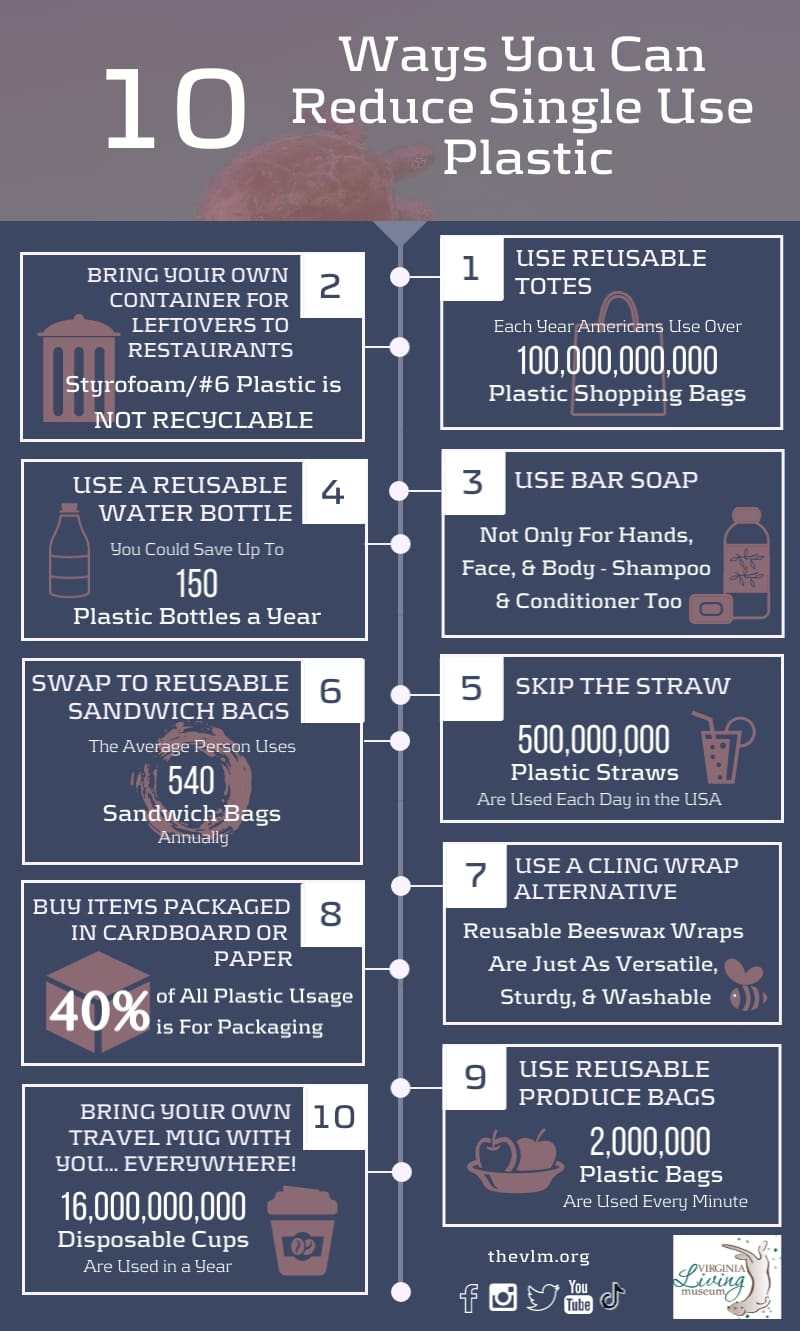
- Use a Reusable Water Bottle – Each year, the United States approximately 50 billion plastic water bottles are used. Carrying a reusable water bottle with you wherever you go is a great way to help lessen your impact. By swapping single-use water bottles for reusable bottles, you could save over 150 bottles per year. Consider a bottle with helpful features like a wide mouth to make it easy to refill/wash and insulation to keep you refreshed all day long.
- Skip the Straw – Plastic straws are abundant in restaurants and coffee shops, but they are also plentiful in waterways and natural habitats. The United States alone uses 500 million straws each day! Straws are necessary and helpful for some people, but consider skipping the straw when you eat out. If you still need or like to use a straw, consider a reusable option to cut down on waste. There are many portable options on the market so you can turn down a straw for your morning iced coffee!
- Swap to Reusable Sandwich Bags – Sandwich bags make kitchen prep, packed lunches, and containing small pieces a breeze, but they can have a major impact on our plastic use. The average person uses 540 plastic sandwich bags per year. You can help reduce use of single-use plastic bags by switching to reusable cloth or silicone bags! These alternatives not only help the environment, but they are easy to clean and reuse for years to come.
- Use a Cling Wrap Alternative – Give up the plastic cling wrap for reusable beeswax wrap! Americans use millions of rolls of plastic wrap every year, switching to a more sustainable version can help lessen our impact on the planet. Beeswax wrap is more sturdy, long-lasting, and washable, meaning it can replace countless rolls of single-use plastic wrap.
- Buy Items Packaged in Cardboard or Paper – When you have the option, try to look for packaging that is paper or cardboard, instead of plastic! Look for brands of versions of products that use recyclable materials. Plastic packaging is responsible for approximately 40% of all plastic usage – see if you can make a switch to help reduce our impact!
- Use Reusable Produce Bags – About 2 million plastic bags are used every minute – including plastic produce bags from grocery stores. By switching to reusable produce bags, you can reduce your plastic bag usage. Fabric reusable bags are not only washable, but more breathable which keeps your produce fresh longer!
- Bring Your Own Travel Mug with You…Everywhere – Over 16 billion disposable coffee cups are used every year, but you can help lower that number by taking a travel mug with you when you go out. Most disposable cups cannot be recycled because of their production materials – but simply using a reusable mug can make a big difference. Consider keeping one in your bag or car so you are never caught without one!
10 Ways You Can Reduce Your Water Use
- Turn Off Water When Brushing Your Teeth – Most people take about 2 minutes to brush their teeth; if the tap is left on during that time, it can use up to 8 gallons of water per day! Turn the tap off while brushing and only use it when you need to rinse. If you brush twice every day, you’ll save over 2,800 gallons of water each year!
- Catch Rainwater to Water Plants – While we might not want to drink rain water without filtering it, collected rainwater is great for use in our yards and gardens. Consider using watering cans or a rain barrel to catch water which you can keep to water flower beds, irrigate vegetable gardens, or wash your car!
- Only Run the Washing Machine When Full – Make sure to run the washing machine when it is full, or adjust it to the size of your load of laundry. By running it for the wrong size, extra water is used for the wash and rinse cycles.

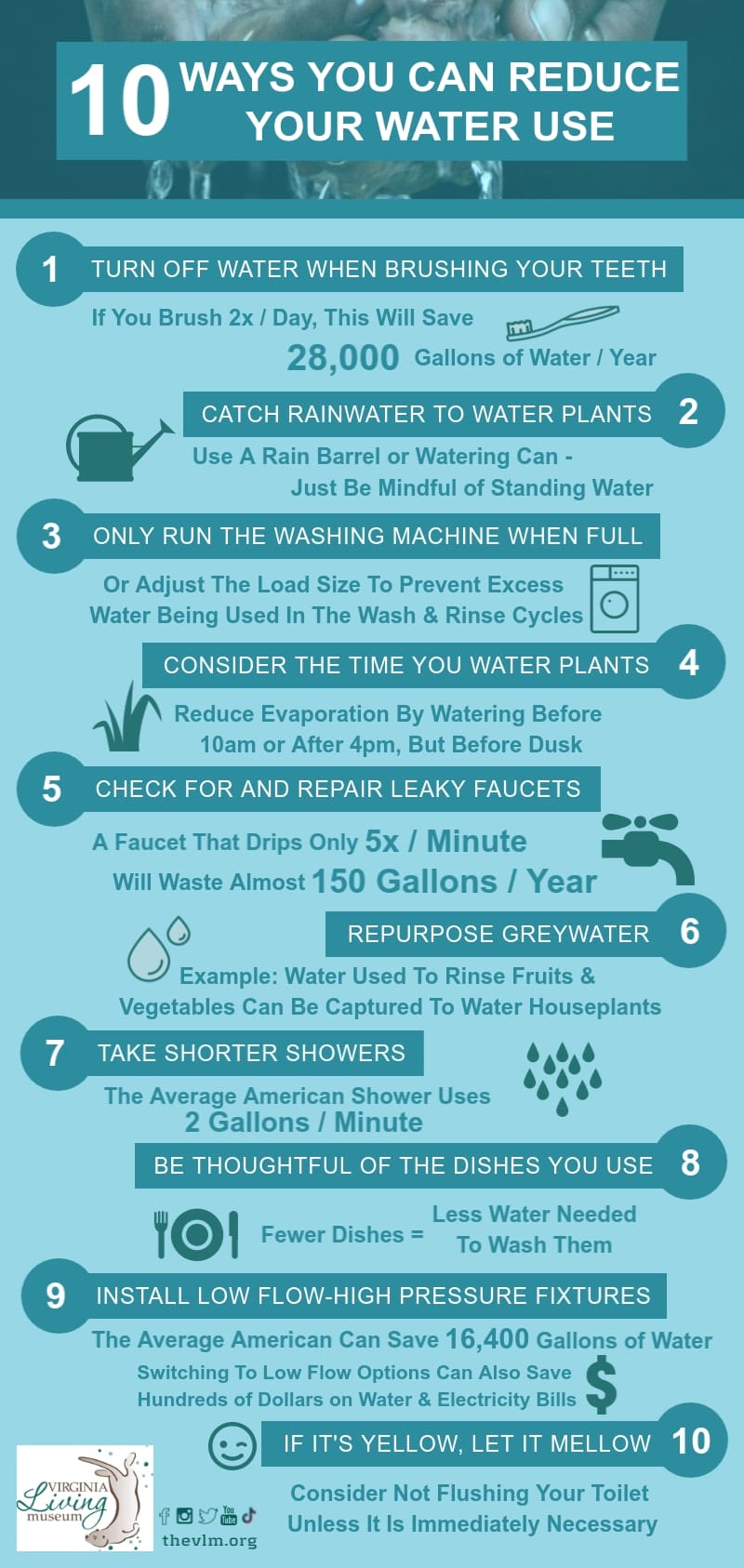
- Consider the Time You Water Plants – Try to water early in the day before 10 am or in the after 4 pm but before dusk. This reduces the amount of evaporation which gets more water to your plants.
- Check For and Repair Leaky Faucets – Try to fix all the leaky or dripping faucets in your home. Even though it may not seem like much, a faucet that drips only 5 times in a minute will waste almost 150 gallons of water each year.
- Repurpose Greywater – Capture the cool water that comes out of the faucet while you’re waiting for the water to heat up, or catch the water used to rinse vegetables. That water can be used to water your houseplants or herb garden.
- Take Shorter Showers – The average American shower uses 2 gallons of water per minute. Try to shorten your showers by just a few minutes to see major water savings. Use a kitchen timer to help you stay on track and meet your goal. When possible, try to avoid taking a bath – they typically use 30-50 gallons of water compared to 20 gallons in the average ten minute shower.
- Be Thoughtful of the Dishes You Use – Using fewer dishes means less water being used to wash. Try to plan out the most efficient way to cook and consume your meals to avoid using unnecessary dishes.
- Install Low Flow/High Pressure Fixtures – Making a minor investment in low flow water fixtures can lead to big savings in the long-run. The average American family can save about 16,400 gallons of water and hundreds of dollars on water and electricity bills every year by switching to low-flow options.
- If It’s Yellow, Let It Mellow – Some people may choose to adopt the saying, “If it’s yellow, let it mellow.” This encourages people to consider not flushing in their own homes if it’s not immediately necessary.






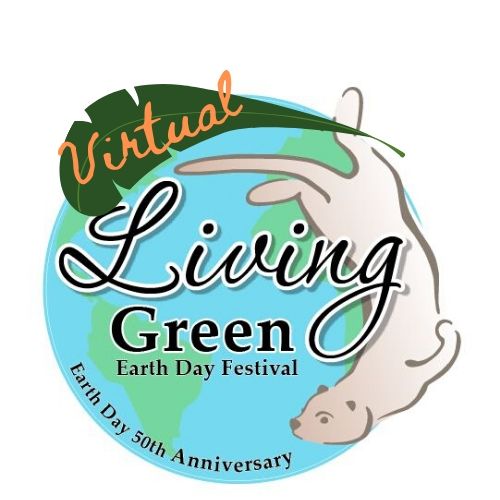
Fitoru
This is a great compilation of amazing ways on how to celebrate Earth day. Great blog , nice post.